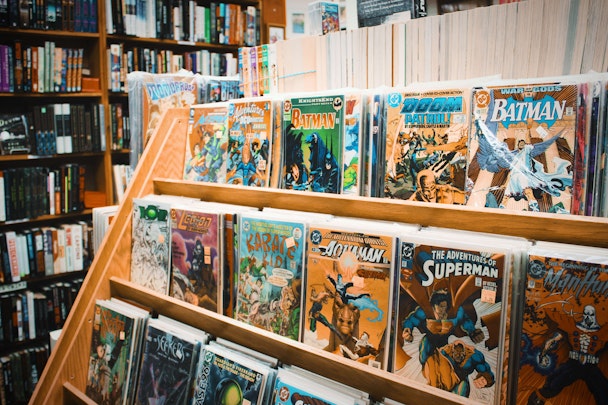Is Alexi Mostrous the brand safety hero that the industry needs? Help us!
Looking back at 2017, the brand safety epidemic was honestly the best and most important thing to happen to advertising.

Alexi Mostrous, head of investigations at The Times published a series of articles that led the way for the demand of independent verification of the world’s biggest duopoly that otherwise limits verification from third party providers. The year proved one of the most critical and trying times for digital media, single-handedly caused by a reporter who may well be the brand safety hero for the industry.
A bold statement but let’s look at 2017 in review.
In January 2017, Marc Pritchard, Procter & Gamble’s global marketing and brand building officer called out the digital advertising industry to wake up and called for a “clean-up” of the digital eco-system. It was an important and pivotal speech that drew cheers from clients, agencies and publishers alike. Some called it the best marketing speech of the decade and that it was essential in driving the success of the programmatic landscape, laying down the law for what Pritchard called, “the crappy media supply chain”. While his request was nothing new and called out before, it was boosted by what was to follow less than two weeks later.
On February 9th, 2017, Alexi Mostrous dropped the bombshell report for big household brands unknowingly funding terrorism on the world’s biggest video sharing platform - YouTube. The report instantly spurred requests for agencies to pause and review advertising buys, specifically on YouTube, as well as media purchased programmatically. Companies like IAS and Moat finally came into the forefront for the brand safety measures they had been touting for many years, while agencies had to revisit brand safety measures that may or may not have already been in place. Google revisited their own measures to reassure clients of their due diligence and established new measures to prevent these types of follies from happening again. Most advertisers returned to the platform following the reassurance, but the issues proved a challenge to resolve.
In May 2017, shortly after the third terror attack in Britain, the third attack in as many months at that time. Prime Minister Theresa May sternly called out technology giants such as Facebook and Google over their lax protocols on violent extremist propaganda which was allowing jihadists to communicate safely out of the reach of intelligence services. On June 7th, less than two weeks later and two days before the UK election, Alexi Mostrous released another scathing report regarding the Liberal, Labour and Conservative UK political parties pulling their advertising on YouTube after their ads were promoted alongside videos of Islamic extremists.
Then on November 24th, Alexi Mostrous reported on what could push for the nail in the coffin – advertisements by some of the world’s biggest brands, were appearing on YouTube videos of children that had generated millions of views with sexually charged and explicit comments by paedophiles. According to the investigation in The Times, there was an estimate of at least 50,000 active predators on the video sharing platform.
Industry experts have long fired the warning shots of the need for brand safety, which appears to fall on deaf ears until the reports that surfaced in The Times. However, the reason why brand safety and transparency is so crucial now is the fact that this has nothing to do with advertising anymore, it’s a geo-political one.
The issue of terrorism in the western world has leaked over from war in Syria, to the rise of ISIS, to the tragic migrant crisis and unclear government intervention from various government superpowers, and is now seeping into the advertising world, specifically programmatic. There is the additional inclusion of media agencies, clients and publishers, in what has become a proxy war over the past year, of buying brand names that possibly support terrorism. Because of this, we are witnessing the digital spring of digital advertising.
One thing that I disagree with Alexi Mostrous about is that it is not big brands funding terror or paedophilic content. The perpetrators are companies that run within their own walled gardens and check their own homework; they should be accountable for what happens to brands that run across their platforms. These are the same companies that are able to take down content almost immediately because of copyright infringement – such as a 2-minute clip from a UFC fight or a music video by Drake that I saw published one night and could not locate the following morning – so why wasn’t it done with content featuring slanderous extremist hate or attracting an estimated 50,000 active predators?
Moving into 2018 however, there is an exceptionally optimistic outlook as brand safety will be top of mind. As a positive start to the year, YouTube has announced it will further mitigate brand safety risks with a number of new measures.
One such measure is that ad placements will only be limited to channels with 1000 subscribers and above and which accrue 4,000 hours of watch-time. We are also seeing consortiums formed among various tech providers who are pushing their competitive encounters aside to address a much larger issue that is for the benefit and sanctity of the industry in the long term.
However, more needs to be done and continued to be led by the duopoly. For everyone that has already taken the initiative, I applaud you, hopefully shift this trend shift upwards quickly now that the fuse has been set, not in the due time that is dictated by the duopoly but by the brands, agencies and publishers that demand something be done now.
Joshua Campanella is regional account director for Southeast Asia at Amnet. He can be found tweeting at @jcvstheworld
